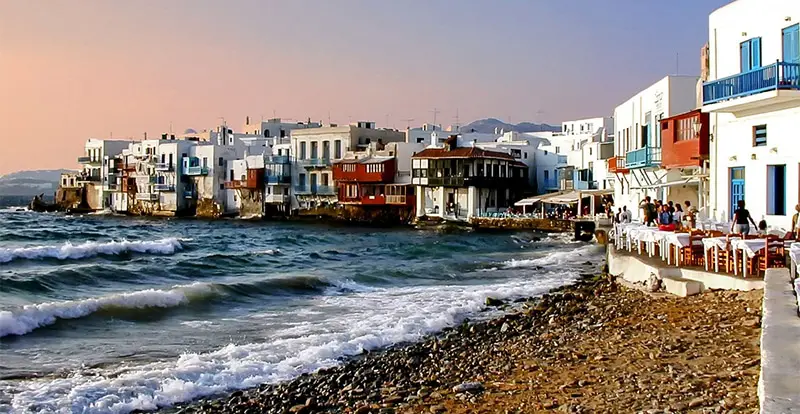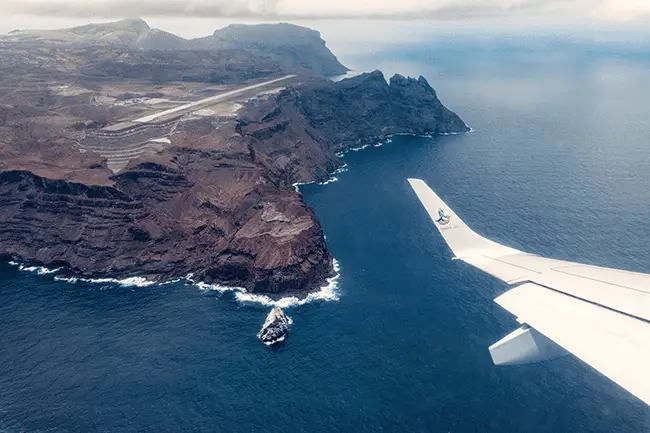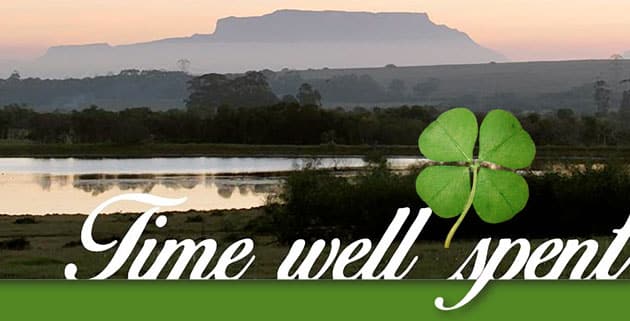Laid Back Lamu Island, Kenya
There’s a tangible sense of the past, as if time has ceased to exist in Kenya’s Lamu Archipelago, that is uniquely memorable and appealing for niche leisure tourism. By Des Langkilde.
The words of author L. P. Hartley (from his book ‘The Go-Between’), “The past is a foreign country; they do things differently there” flitted through my mind as our media retinue, hosted by the Kenya Tourism Board, leisurely sailed on board a Dhow ferry that miraculously resisted the incoming tide flowing up the channel that separates Lamu Island from Manda Island in Kenya’s Lamu Archipelago, where the Lamu district’s small airport is located.
At first glance Lamu appears to be an idyllic island of tranquillity but beneath the surface lies a fascinating Smörgåsbord of history, culture, biodiversity and unique Swahili heritage.
So beguiling and laid back is Lamu that it sparks a creative chord with artists, like Christian Rock artist Michael W. Smith’s song of the same name (released in 1986 in his album ‘Pursuit of the Dream’) in which the opening verse goes:
“Here we are on a boat out on the sea
Off the coast of Africa
Heading for peaceful shores
With a cast of strangers
To an island hideaway.
I hear you telling me
Of the place we soon will be
A rebirth from life’s demise
Where the world is still – it’s ideal
Anything you dream is real
It’s Hotel Paradise
And you say it’s nice (when you run to).”
And the verses on escapism intersperse with the chorus line:
“Lamu – far away
Leave the pain far behind you
Hoping it won’t find you.
Lamu – far away
You say it’s there that you can run.”
In case you’re wondering where the fabled Lamu that Smith’s heroin can run to actually is, it’s located in the Indian Ocean close to the border with Somalia. The largest of the islands in the archipelago are Pate Island, Manda Island and Lamu Island. Smaller islands include Kiwayu, which lies in the Kiunga Marine National Reserve, and Manda Toto. The largest town in the archipelago is Lamu Town or ‘Stone Town’, which is obviously on Lamu Island.
But Lamu Town would be part of day two in our media group’s itinerary. For now, we were headed for Peponi Hotel, where we gathered on the hotels’ balcony for a quick briefing by the resident General Manager Andrew (surname not revealed), while sipping on vodka cocktails made with fresh lime juice.
Peponi is owned by the Korschen family, who opened the hotel in 1967 and developed the property to its current 29 rooms, which are divided into suites, superior and standard rooms.
Andrew jovially braged that Peponi is the only hotel on the island where all rooms have ocean views and are differentiated only by their location, size and private outside area with swing bed. All rooms have overhead fans, mosquito nets, showers (no baths), fresh flowers, and personal safes.
To get a visual sense of what Peponi Hotel has to offer, take a look at the video below, produced by D. David Morin of Slingshot Productions based in Nairobi, Kenya.
Andrew was justifiably proud of the fact that Peponi Hotel started the Lamu Marine Conservation Trust (LAMCOT) in 1992. The project began with the translocation of a turtle nest to the hotel grounds for protection. Since then the project has been growing every year and has been managed by Carol Korschen of Peponi Hotel from the start.
I could waffle on the merits of this hotel’s cuisine, relaxing atmosphere and friendly hospitality for the rest of this article, but suffice to say that every moment is a laid back and memorable experience.
Lamu Town
Day two of our media retinue’s Lamu itinerary saw our group of five sailing up the channel for a visit to Lamu Old Town, accompanied by our hotel guide, Abdul Alim.
During the fifteen minute sail by Dhow, Abdul gave us a brief history lesson. “Lamu Town was gazetted as a UNESCO World Heritage Monument in 1983 and is Kenya’s oldest continually inhabited town. Unlike other Swahili settlements which have been abandoned along the East African coast, Lamu has continuously been inhabited for over 700 years and is East Africa’s oldest and best-preserved Swahili settlement, founded in 1370. Lamu Town covers over sixteen hectares and is famous for its narrow streets, magnificent stone buildings and impressive carved doors, influenced by Swahili, Arabic, Persian, Indian and European building styles,” said Abdul.
The buildings on the waterfront with their arcades and open verandas certainly provide an ‘Old Town’ impression when approaching it from the channel. The buildings are internally decorated with painted ceilings, large niches (
According to UNESCO, 65% of the buildings are in good condition with 20% being in need of minor refurbishment and the remaining 15% in
Lamu Fort is visible on approach to the harbour quayside, and Abdul, our encyclopaedic guide, informed us that it commenced construction under Fumo Madi ibn Abi Bakr, the Sultan of Pate, and was completed after his death in the early 1820s.
What impressed me while ambling past the Donkey Sanctuary and along the narrow street passageways, is that apart from the odd bicycle, there are no vehicles on the island – people get around on foot, by donkey or arrive in the town by lateen-rigged dhows.
Lamu has a sizeable artisan community, including carpenters who are involved in boat building and making ornate doors and furniture. Culturally, Lamu’s Arab influences and traditions are audibly apparent by the daily calls to prayer, which still dominates local life. According to Abdul the know-it-all, Lamu is home to 23 mosques including the Riyadha Mosque, built in 1900.
Abdul continued his enthusiastic history lesson as he guided us along: “The town was first mentioned in writing by Abu-al-
Not to be outdone by Abdul, I did some online research back at the hotel and learnt that the Portuguese invasion was prompted by the nation’s successful mission to control trade along the coast of the Indian Ocean. For a considerable time, Portugal had a monopoly on shipping along the East African coast and imposed export taxes on preexisting local channels of commerce. In the 1580s, prompted by Turkish raids, Lamu led a rebellion against the Portuguese. In 1652, Oman assisted Lamu to resist Portuguese control.
My research also revealed that Lamu’s years as an Omani protectorate during the period from the late 17th century to early 19th century marked the town’s Golden Age. Back then, Lamu was governed as a republic under a council of elders known as the Yumbe who ruled from a palace in the town (little exists of the palace today though, other than a ruined plot of land).
During this period, Lamu became a centre of poetry, politics, arts and crafts as well as trade. In the middle of the 19th century, Lamu came under the political influence of the Sultan of Zanzibar. The Germans then laid claim to it as they considered Lamu to be of strategical importance and an ideal place for a Navy base and named it Wituland in June 1885. From 22 November 1888 to 3 March 1891 there was a German Post Office in Lamu, built to facilitate communication within the German Protectorate in the Sultanate. It was the first post office to be established on the East African coast; today there is a museum in Lamu dedicated to it, the German Post Office Museum. In 1890, Lamu and Kenya fell under British colonial rule and gained political independence in 1963. Here endeth the lesson.
Moving along, our tour continued along Harambee Avenue, noted for its cuisine and range of stores including the Halwa shop, which sells sweet treats and miniature mutton kebabs. The town contains a central market (the fresh produce and fish/meat markets are thankfully separated), the Gallery Baraka, Shumi’s Designs shop, and the Mwalimu Books store.
Hotels
The oldest hotel in the town, Petley’s Inn, is situated on the waterfront. Other hotels include the American-restored Lamu House, the 20-room Bahari Hotel, the Swedish-owned Jannat House, the 3-storey 23-room Lamu Palace Hotel, the 13-room Stone House Hotel, which was converted from an 18th-century house, and the 18-room Sunsail Hotel, a former trader’s house on the waterfront with high ceilings. I managed to poke my nose into most of these for a quick look around.
Shela Village
Back at the Peponi Hotel, we had the rest of the day at leisure before our itinerary demanded a sundowner cruise (media trips can be tough). With free time on my hands, after a refreshing shower, I took an exploratory walk to Shela village, located just behind the hotel. The village was oddly empty and quiet in contrast to Lamu Town. Intrigued by this mystery, I surfed the net when back in my room.
I come across a report by Erin Conway-Smith, writing for the Global Post in 2011 that perhaps explains the contrast between the apparently deserted Shela Village and the bustle of Lamu Old Town – the homeowners all live abroad.
“That’s because wealthy foreigners, among them Princess Caroline of Monaco and her husband Prince Ernst of Hanover, now own about half of the properties in Shela.Villagers who sell their properties earn enough to buy a big house or two in the cities of Mombasa or Malindi, down the Kenyan coast. Locals say that within five years, every house in Shela will be foreign owned.”
Conway-Smith’s observations, even years later, were confirmed by Abdul (our encyclopaedic guide through Lamu Town), who said that local imams (Islamic leaders) are cautious about the effect of outside influences on local culture but that they praise foreign property owners for helping to preserve the historic Swahili architecture (the foreign-owned homes, that is, not the locals homes).
Development
Abdul further elaborated that locals are cautious of development projects in the Lamu district. This sentiment was borne out by our ‘booze-cruise’ Dhow skipper, who said that the new harbour development would take away their livelihoods. He didn’t elaborate on exactly how this would come about and I decided not to press him. Back in my room I again surfed the collective knowledge base of humanity and discovered that it’s the Lamu Deep Water Port Project, which forms part of the Kenya Coastal Development Project (KCDP), that had them all riled up.
According to the Kenya Government, the project aims to promote sustainable management of tourism and fishery resources in line with Kenya’s Vision 2030 initiative, which identifies tourism as an engine of growth, job creation, poverty reduction and wealth generation in the Coastal region.
Nothing wrong with that, so it couldn’t be the KCDP that had them so riled up. I continued my online research and found that Lamu’s economy apparently declined with the emergence of the Port of Mombasa, but thanks to the Lamu Deep Water Port Project, the local economy would purportedly be boosted through the creation of Kenya’s second transport corridor, headquartered in Lamu.
According to a report in The Star newspaper, the Kenya Ports Authority management said that construction of the first three berths at the Lamu port would start in June 2014. I guess it’s just changing that the locals are against. They do seem to have an
As I quoted at the start of this article, “The past is a foreign country…” and Lamu locals seem determined to live in it. And so would I, given the chance!
Activities
Besides the history and cultural aspects, there’s a lot to do in and around Lamu. Sunset cruises onboard lateen sailed Dhows are popular as are viewing excursions around the network of islands and sand banks in the archipelago.
Day three of our media itinerary allowed time for an early morning excursion to immerse ourselves with the marine life. We headed off through the channel mouth, past Shela Beach and headed for the distant horizon onboard a fibre-glassed boat with powerful outboard engines.
Our destination, a rocky outcrop in the middle of nowhere hove into view and after tossing anchor, my colleagues donned masks and fins and plunged into the warm Indian ocean. Being a qualified NAUI Dive Master, I opted to desert them for an hour. The usual assortment of reef fish could be spotted through the somewhat turbulent, and hence reduced visibility, but no sharks were spotted – a fact that my media colleagues seemed more than thankful for.
Getting There
Safarilink departs from Wilson Airport in Nairobi daily at 13h45 and arrives at Lamu at 15h30. Note that the luggage allowance limit is 15kg.
South African Airways (SAA) have introduced wide body aircraft on the Johannesburg – Nairobi route, effectively increasing capacity into Kenya by 582 seats per week.

















